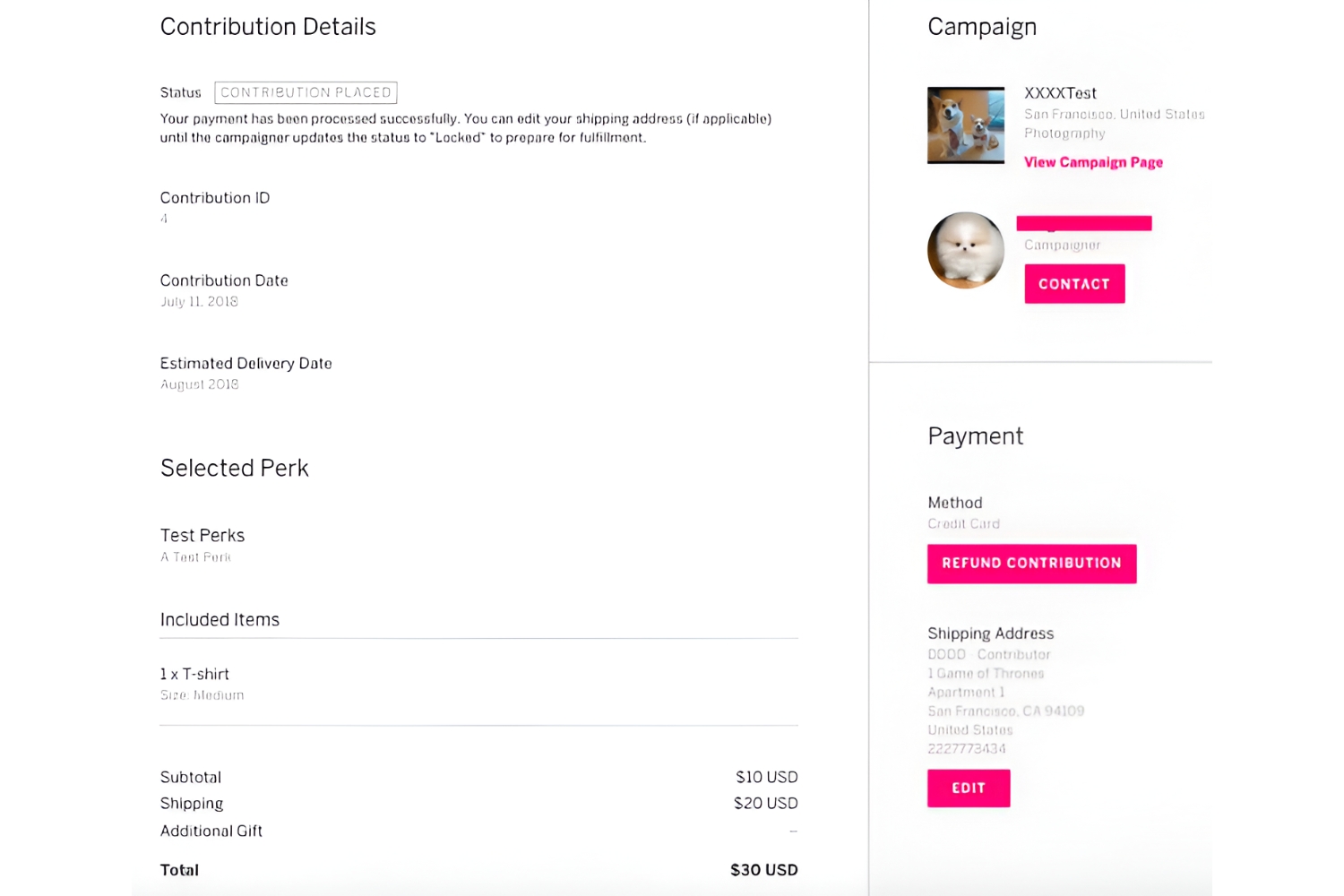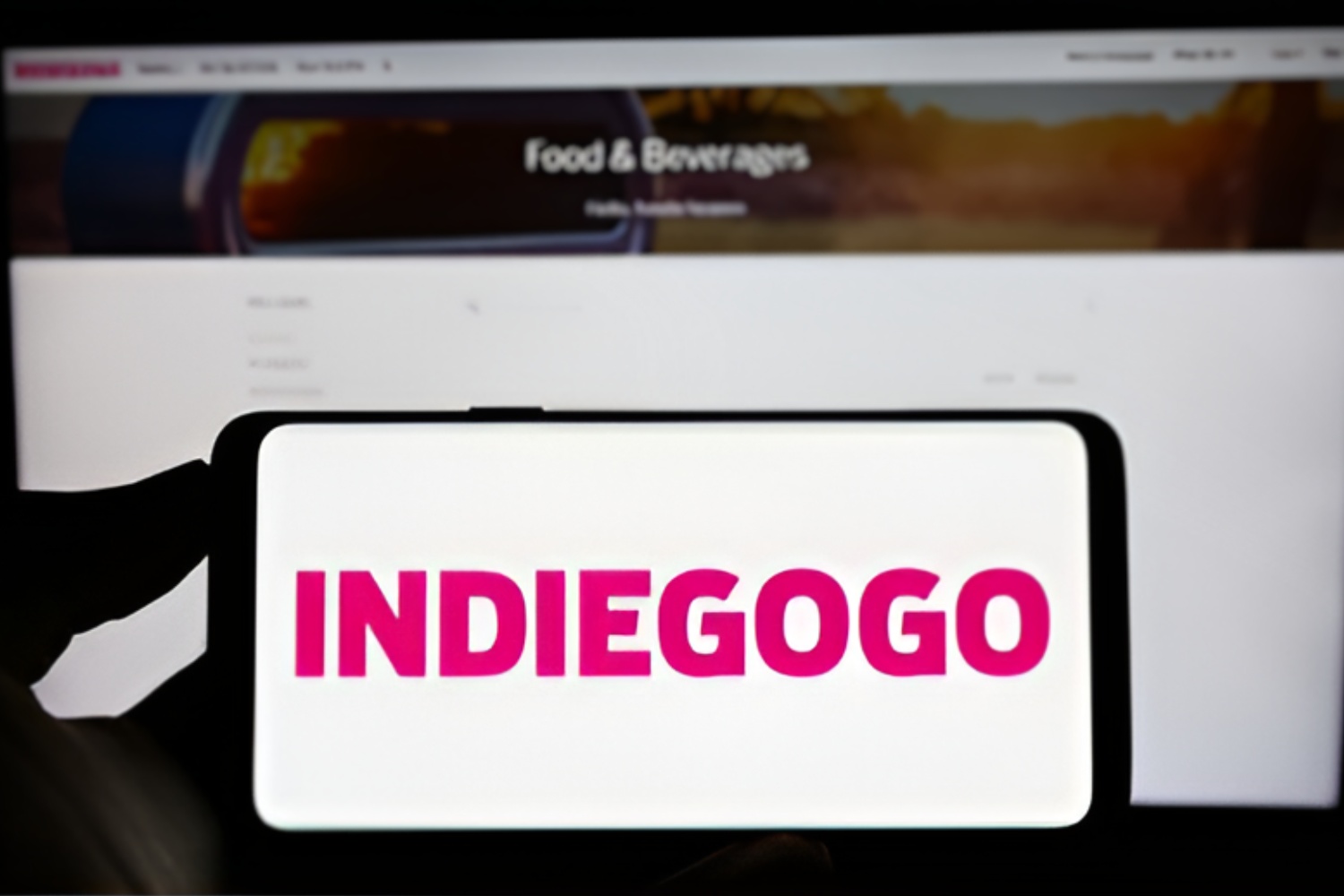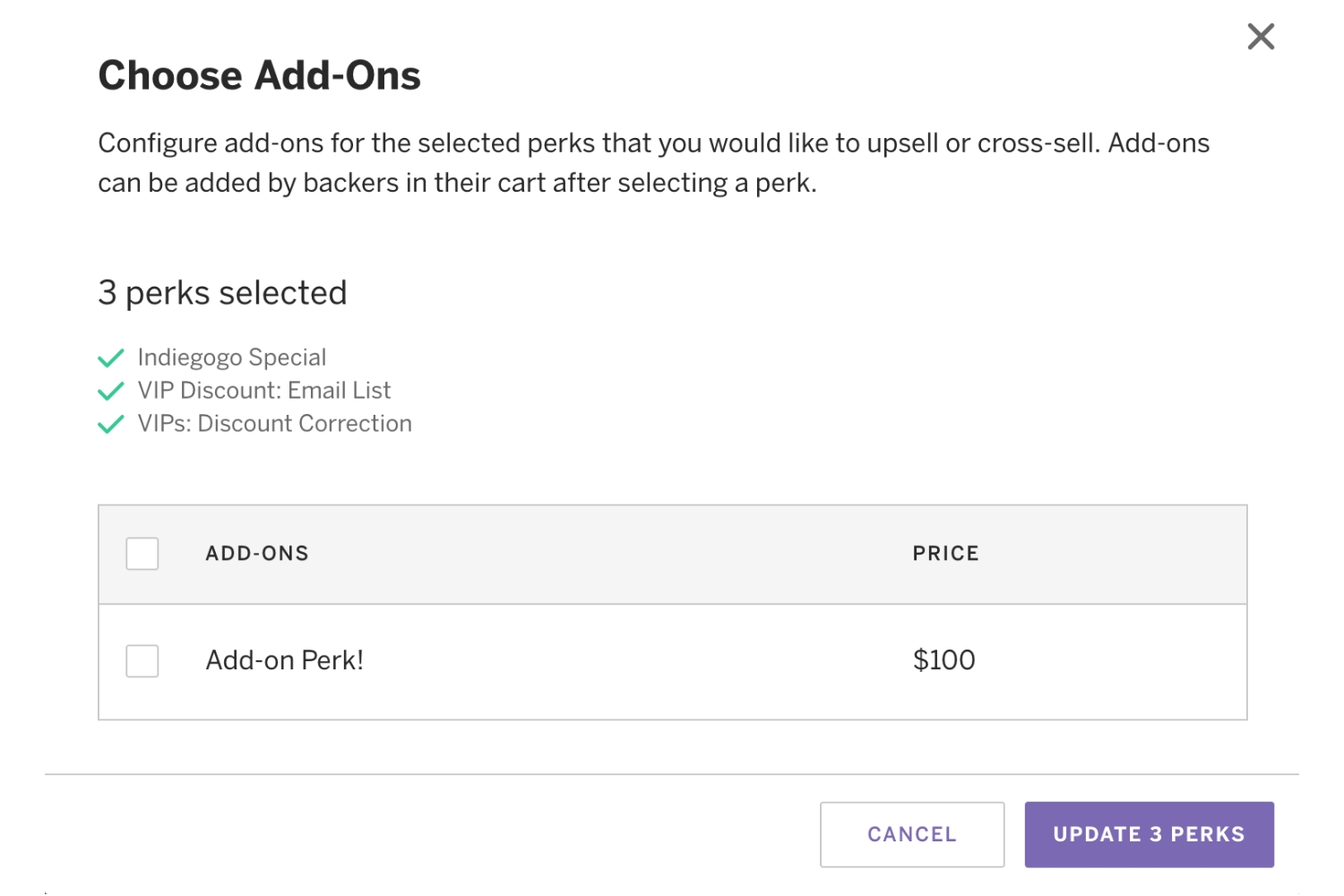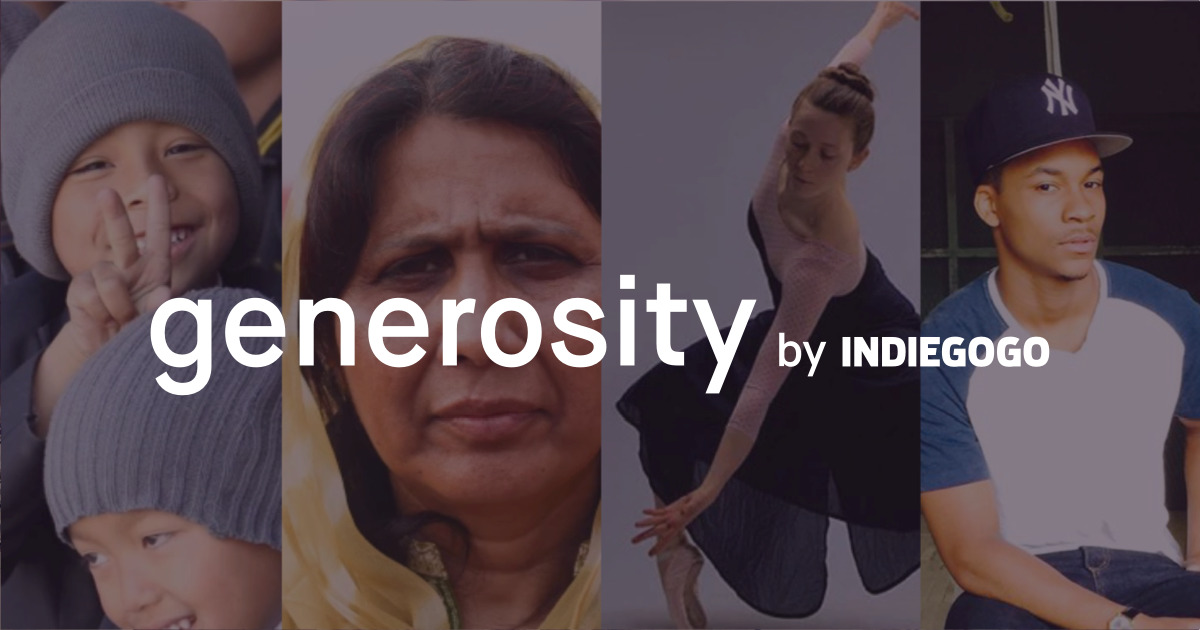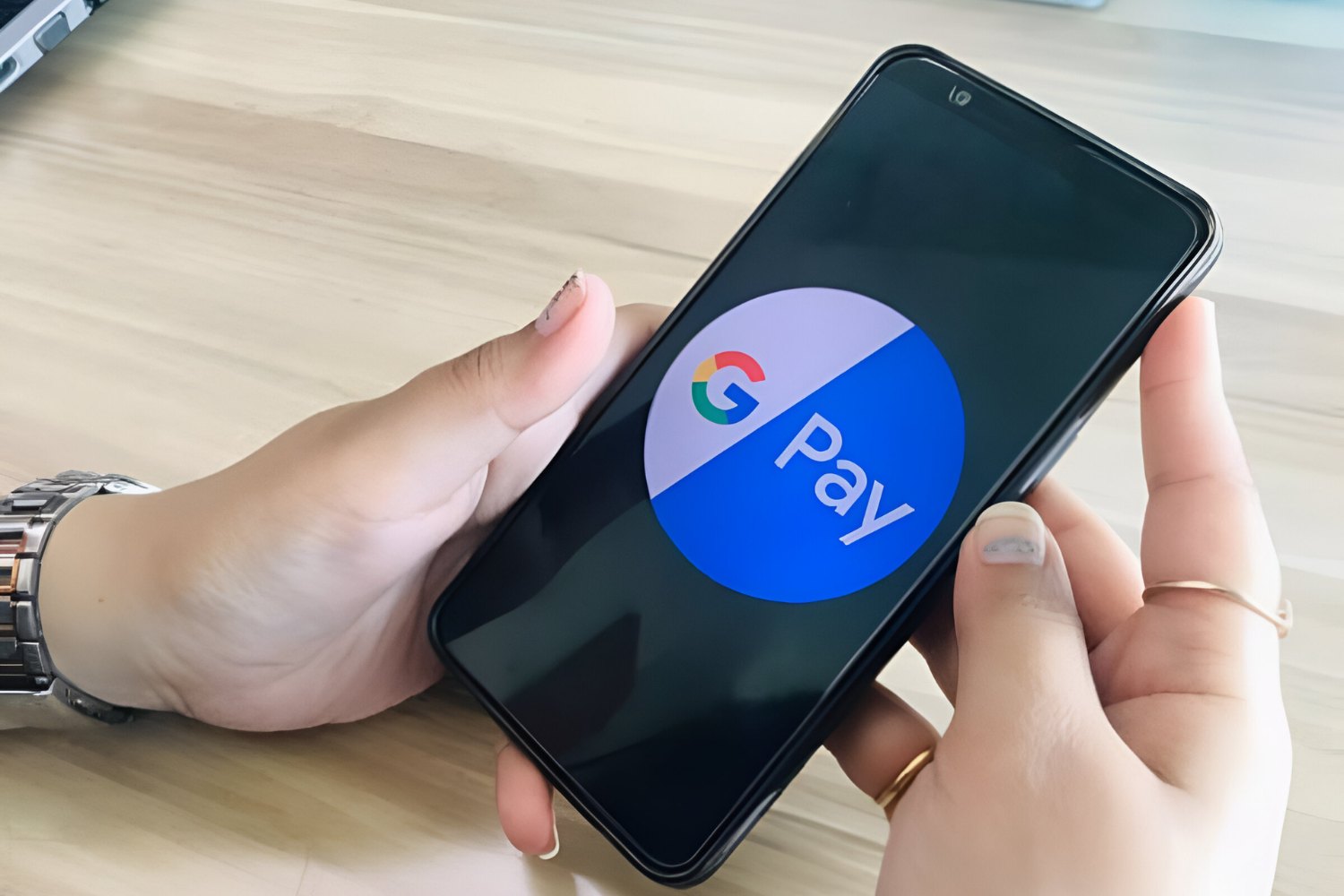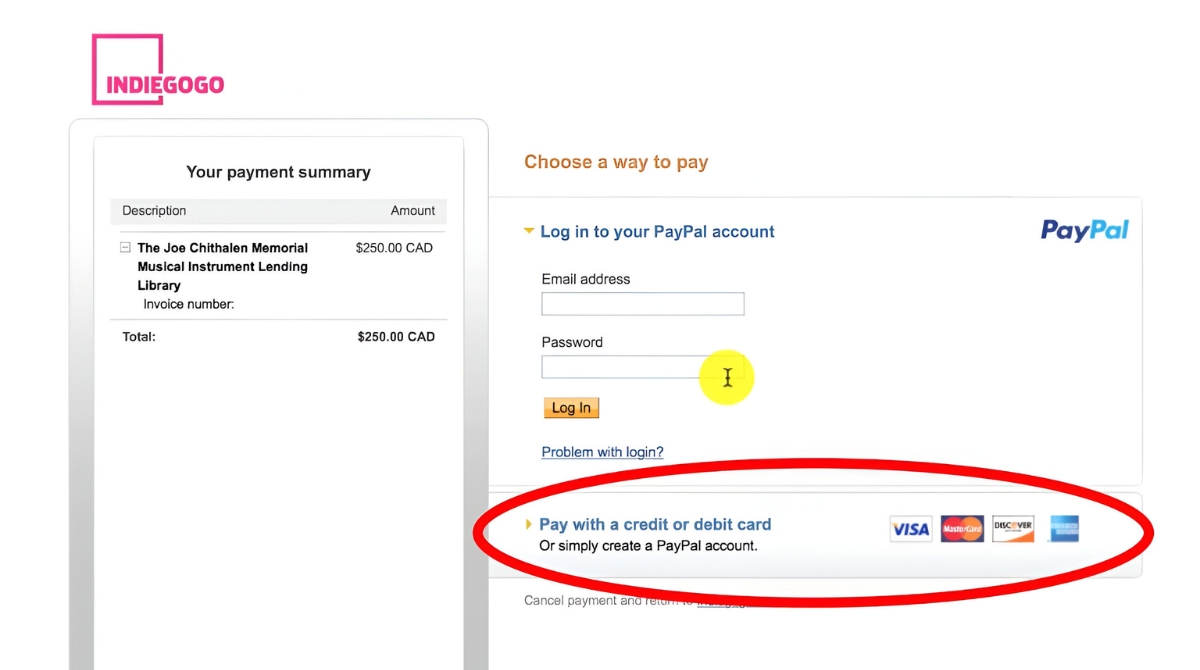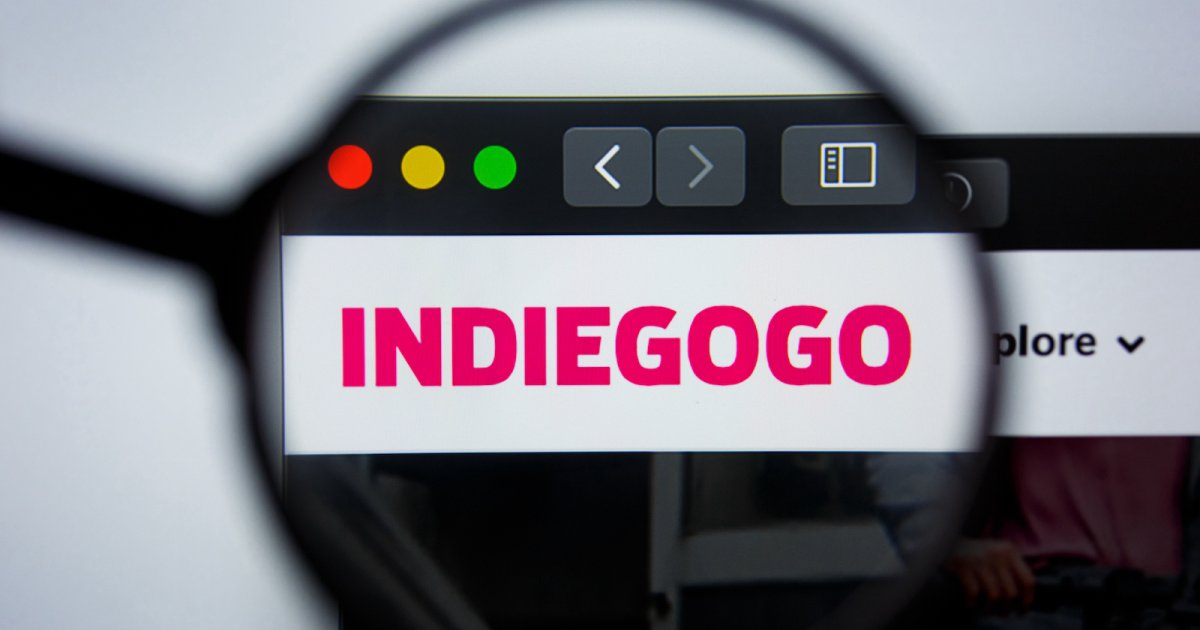Understanding Indiegogo Campaigns
Indiegogo is a popular crowdfunding platform that empowers individuals and businesses to raise funds for their innovative projects. Whether you have a brilliant idea for a new product, a creative initiative, or a charitable cause, Indiegogo allows you to reach a global audience and secure the financial support you need to bring your vision to life.
One key aspect of understanding Indiegogo campaigns is recognizing the different types of campaigns available on the platform. There are two primary campaign types: flexible funding and fixed funding. In a flexible funding campaign, the project creator keeps the funds raised regardless of whether they reach their fundraising goal. On the other hand, fixed funding campaigns require the project creator to reach their specified goal within a set timeframe in order to receive any funds at all.
When considering contributing to an Indiegogo campaign, it’s essential to do your due diligence. Take the time to research the campaign thoroughly, assessing the project’s viability, the creator’s track record, and the overall level of transparency. Indiegogo provides a platform for creators to share detailed information about their projects, including their goals, timeline, and any potential risks involved. Additionally, you can review the campaign’s comments section and updates to gauge community engagement and the creator’s responsiveness.
Now, let’s talk about payment options on Indiegogo. When you decide to support a campaign, you have the choice of using various payment methods, including credit cards and PayPal. Indiegogo’s payment processing system ensures secure transactions, protecting your sensitive information. It’s important to note that some campaigns may also offer alternative payment methods, such as cryptocurrency or wire transfers, depending on the preferences of the project creator.
Once you’ve made your contribution, you may be wondering when exactly your payment will be processed. The timing of payment depends on several factors, including the campaign type, the payment option you chose, and whether the campaign has reached its fundraising goal. In some cases, you may be charged immediately upon contributing, while other campaigns may only process payments if they reach their funding target.
By understanding the nuances of Indiegogo campaigns, payment options, and timing, you’ll have a clearer grasp of how the platform operates. This knowledge will enable you to confidently support projects that align with your interests and values. Whether you’re a passionate advocate for innovative tech gadgets or have a soft spot for creative art projects, Indiegogo offers a diverse range of campaigns that allow you to make a meaningful impact on the world.
Different Campaign Types on Indiegogo
Indiegogo, the popular crowdfunding platform, offers two primary campaign types that project creators can choose from when launching their fundraising initiatives: flexible funding and fixed funding.
Flexible funding campaigns provide project creators with the flexibility to keep the funds they raise, regardless of whether they reach their ultimate fundraising goal. This type of campaign is well suited for projects that can benefit from any level of funding and are not dependent on reaching a specific target. With flexible funding, even if the campaign falls short of the goal, project creators can still use the funds received to advance their project.
On the other hand, fixed funding campaigns require project creators to set a specific fundraising goal and a defined timeframe to reach that goal. In these campaigns, it’s an all-or-nothing scenario – if the project fails to meet the target by the campaign’s end, the funds are returned to the contributors, and the project creator receives nothing. Fixed funding campaigns are typically used for projects that have specific financial needs, such as manufacturing costs, research expenses, or product development.
The decision between flexible and fixed funding campaigns depends on the nature of the project and the preferences and circumstances of the project creator. Each approach has its advantages and considerations.
Flexible funding can provide project creators with valuable resources, even if they don’t achieve their ultimate goal. It allows for incremental progress and gives creators the opportunity to refine and expand their projects over time. However, it’s important to keep in mind that with flexible funding campaigns, there may be a greater risk of projects not meeting their full potential due to insufficient funds.
Fixed funding campaigns, on the other hand, create a sense of urgency and motivation for both the project creator and the contributors. The clear goal and timeframe provided by these campaigns can attract supporters who are more inclined to contribute when they know their support is essential for the project’s success. Additionally, fixed funding campaigns offer a level of certainty for contributors, knowing that their funds will only be used if the project reaches its target. This reduces the risk of their contributions being diluted across multiple projects.
When deciding which campaign type to support, it’s essential to thoroughly review the campaign details and understand the benefits and risks associated with each approach. Consider the project’s suitability for flexible or fixed funding, the track record and credibility of the project creator, and your personal alignment with the project’s goals and values.
Understanding the different campaign types on Indiegogo empowers you as a contributor to make informed decisions and support the projects that resonate with you the most. Whether you choose to contribute to a flexible funding campaign that allows for incremental progress or a fixed funding campaign with a clear target, your support can play a significant role in bringing innovative ideas and creative endeavors to life.
Before You Make a Contribution
Before you contribute to a campaign on Indiegogo, it’s important to take a few key factors into consideration. These steps will help ensure that your contribution supports a legitimate project and aligns with your expectations.
Firstly, thoroughly read through the campaign details provided by the project creator. Pay close attention to the project’s description, goals, and timeline. Understand what the project aims to achieve and how the funds will be used. This will give you insight into the project’s feasibility and whether it aligns with your interests and values.
Next, review the project creator’s track record and credibility. Check out their profile, previous campaigns, and any feedback they have received from previous contributors. A project creator with a positive track record and a history of successful campaigns is more likely to deliver on their promises and provide a valuable experience for contributors.
Engage with the campaign’s community by checking the comments section and updates. This will allow you to gauge the level of engagement and interaction between the project creator and the supporters. Look for responsiveness from the project creator and open communication with the community. A project with an engaged community is more likely to foster transparency and build trust.
Additionally, consider the level of transparency provided by the project creator. Look for detailed information about the project’s risks, challenges, and potential setbacks. A transparent creator who acknowledges the potential risks demonstrates a level of honesty and accountability, which can instill trust in contributors.
Take the time to research the market or industry related to the project. Understand the competitive landscape and any similar products or initiatives. This will help you assess the project’s uniqueness and potential for success. Look for projects that bring something new or innovative to the table, offering a fresh perspective or solving a pressing problem.
Finally, consider your personal budget and financial situation before making a contribution. Determine a comfortable amount that you can contribute without putting a strain on your finances. Crowdfunding is a collective effort, and every contribution, big or small, can make a difference in helping a project succeed. Only contribute what you are comfortable with and feel passionate about supporting.
By following these steps before making a contribution, you can make informed decisions and support projects that have the potential to make a positive impact. Your contribution not only helps bring innovative projects to life but also supports creators and their creative endeavors, fostering a vibrant and diverse crowdfunding community.
Payment Options on Indiegogo
When it comes to making a contribution on Indiegogo, there are several payment options available to ensure a seamless and secure transaction process. Indiegogo offers a range of payment methods, making it convenient for contributors to support their favorite campaigns.
The most common payment options on Indiegogo include credit cards and PayPal. These widely used methods allow for easy and secure transactions, giving contributors the flexibility to choose the payment option that suits them best. When using a credit card, ensure that it is valid and has sufficient funds available to cover the contribution amount.
Indiegogo ensures the security of transactions by employing robust payment processing systems. This ensures that sensitive information, such as credit card details, remains protected. Your payment information is encrypted, making it safe from potential fraudulent activities.
It’s important to note that some campaigns may also offer alternative payment methods based on the preferences of the project creator. These options may include cryptocurrency payments or wire transfers. Cryptocurrency payments provide an additional layer of security and anonymity, while wire transfers are suitable for contributors who prefer more traditional methods of payment.
Before choosing a payment option, ensure that you are comfortable with the method and verify any additional fees or charges that may be associated with the selected payment option. Review the campaign details to see if the project creator has specified any particular requirements or limitations for payment methods.
When making a contribution, ensure that you follow the provided instructions to complete the payment process correctly. Double-check your payment details, including the contribution amount and any additional perks or rewards you may have selected. Once the payment is confirmed, you will receive a confirmation email or receipt for your records.
It’s worth mentioning that during the payment process, you may have the option to leave a contribution as anonymous or disclose your name and contribution publicly. This decision depends on your preference for privacy and public recognition.
By providing an array of payment options, Indiegogo aims to make the contribution process accessible and convenient for contributors worldwide. Whether you choose to use a credit card, PayPal, or explore alternative payment methods, your support plays an essential role in helping projects come to life and creators turn their ideas into reality.
When Do I Pay on Indiegogo?
The timing of payment on Indiegogo depends on various factors, including the campaign type, payment option selected, and the campaign’s fundraising progress. Understanding when you can expect to pay for your contribution is important to manage your budget and expectations.
In general, when you decide to support a campaign on Indiegogo, your payment will usually be processed immediately or shortly after your contribution is made. However, there are exceptions and variations depending on the campaign’s settings.
In a fixed funding campaign, where the project creator has set a specific fundraising goal and deadline, your payment is typically not charged until the campaign successfully reaches its target by the end of the specified timeframe. If the campaign does not reach its goal, your payment will not be processed, and your contribution will not be charged.
In a flexible funding campaign, your payment is usually processed immediately upon making a contribution. Whether the campaign reaches its goal or not, the project creator keeps the funds raised and can utilize them to advance the project.
It’s important to note that some campaigns may have specific payment settings that delay payment processing until certain milestones or goals are reached. These settings are determined by the project creator and can vary from campaign to campaign. Consequently, you may experience payment processing delays based on the preferences of the project creator.
When it comes to payment options, credit card and PayPal transactions are typically processed promptly. However, alternative payment methods, such as cryptocurrency or wire transfers, may have different processing times based on their respective systems and protocols. Consider these factors when selecting your preferred payment method.
An easy way to determine the payment status of your contribution is to check the campaign’s updates or the confirmation email you receive. The project creator may provide updates on the campaign’s progress and inform contributors about payment processing timelines and any changes or delays.
By understanding the payment process on Indiegogo, you can anticipate when your contribution will be charged and manage your expectations accordingly. Remember to review the campaign details and payment settings to familiarize yourself with any specific terms or conditions set by the project creator. Your support not only helps projects come to fruition but also contributes to a vibrant and thriving crowdfunding community.
Factors That Affect Payment Timing
The timing of payment on Indiegogo can be influenced by several factors. Understanding these factors can help you anticipate when your contribution will be charged and manage your expectations accordingly.
One key factor that affects payment timing is the campaign type. In a fixed funding campaign, where the project creator has set a specific fundraising goal and deadline, your payment is typically not charged until the campaign successfully reaches its target by the end of the specified timeframe. On the other hand, in a flexible funding campaign, your payment is usually processed immediately upon making a contribution, whether the campaign reaches its goal or not.
The payment option you choose can also impact payment timing. Credit card and PayPal transactions are typically processed promptly, ensuring that your contribution is charged to your selected payment method without delay. However, alternative payment methods, such as cryptocurrency or wire transfers, may have different processing times based on their respective systems and protocols. Keep this in mind when selecting your preferred payment method.
The fundraising progress of the campaign can also affect payment timing. Some campaigns have specific payment settings that delay payment processing until certain milestones or goals are reached. These settings are determined by the project creator and can vary from campaign to campaign. For instance, the campaign may have a “pre-authorization” system where your payment information is collected but not charged until a specific funding threshold is achieved.
Additionally, the project creator may choose to process payments in batches rather than individually. This approach allows them to manage the payment collection process more efficiently, especially for campaigns with a large number of contributors. As a result, there may be a slight delay in payment processing as the project creator consolidates and confirms contributions before charging them.
Communication and updates from the project creator play a crucial role in informing contributors about payment timing. The project creator may provide updates on the campaign’s progress and inform contributors about payment processing timelines and any changes or delays. Be sure to check for updates on the campaign page or in the confirmation email you receive after making your contribution.
By considering these factors that affect payment timing, you can have a better understanding of when your contribution will be charged. It’s essential to review the campaign details and payment settings to familiarize yourself with any specific terms or conditions set by the project creator. Your support as a contributor not only helps projects come to life but also fuels the spirit of innovation and creativity on Indiegogo.
Pre-Authorized Payments vs. Full Payments
When contributing to a campaign on Indiegogo, you may come across two different payment types: pre-authorized payments and full payments. Understanding the distinction between these payment methods can help you navigate the contribution process effectively.
In a pre-authorized payment system, also known as “pre-authorization,” your payment information is collected at the time of contribution, but the actual payment is not charged immediately. This system allows the project creator to collect payment details from contributors upfront, while delaying the actual charge until a specific funding threshold or campaign milestone is reached.
Pre-authorized payments provide flexibility for both contributors and project creators. For contributors, it allows them to show support for a campaign without immediately committing to a financial transaction. They can provide their payment information and reserve their contribution, while waiting to see if the campaign reaches its funding goal or achieves a crucial milestone.
From the project creator’s perspective, pre-authorized payments allow them to gauge the level of interest and commitment from backers before actually charging their contributions. It enables them to assess the viability of the campaign and make informed decisions about whether or not to proceed with the project based on the level of support they receive.
In contrast, full payments refer to the immediate or near-immediate charging of your payment method upon making your contribution. With full payments, your contribution is processed and charged right away, regardless of whether the campaign reaches its funding goal or not.
Full payments are often used in fixed funding campaigns, where there is a specific fundraising target that must be met in order for the campaign to be successful. By charging contributions immediately, project creators can more accurately track their progress towards the goal and have immediate access to the funds raised, even before the campaign concludes.
It’s essential to understand the payment type associated with the campaign you’re contributing to. The campaign details and payment settings will specify whether it is a pre-authorized payment or a full payment campaign. Be sure to review this information before making your contribution.
Both pre-authorized payments and full payments have their advantages and considerations. Pre-authorized payments provide flexibility for contributors and allow project creators to evaluate the level of support before charging contributions. Full payments, on the other hand, provide instant access to funds for project creators and offer a clear indication of progress towards a fundraising goal.
By understanding the difference between pre-authorized payments and full payments, you can navigate the contribution process confidently and choose the payment type that aligns with your preferences and expectations. Your support as a contributor plays a vital role in bringing innovative ideas and creative projects to life on Indiegogo.
Tracking Your Contribution on Indiegogo
Once you have made a contribution to a campaign on Indiegogo, you may be eager to track the progress of your contribution and stay updated on the campaign’s developments. Indiegogo provides several ways for you to track your contribution and stay connected with the campaign’s creators.
The first method to track your contribution is through the campaign’s updates. Project creators regularly post updates on their campaign pages to keep contributors informed about the project’s progress, milestones achieved, and any challenges or setbacks encountered. These updates provide valuable insights and allow you to follow along with the campaign’s journey. You will receive email notifications for these updates, ensuring that you do not miss any important information.
In addition to updates, the campaign page also displays a comments section. This section serves as a space for contributors and other interested individuals to ask questions, leave comments, and engage in discussions related to the project. Monitoring the comments section allows you to connect with other contributors and gain a deeper understanding of the project’s community and the creator’s responsiveness.
Indiegogo also provides a dashboard feature for registered users, where you can monitor your contributions and track their status. The dashboard gives you an overview of all the campaigns you have contributed to, allowing you to easily access each campaign’s details and updates. This centralized view helps you stay organized and keep track of multiple projects simultaneously.
If you have any specific questions or concerns regarding your contribution, you can reach out to the project creator directly. The campaign page usually includes contact information or a direct messaging option to facilitate communication between creators and contributors. Don’t hesitate to reach out to the project creator if you need clarification or want to inquire about any project-related matters.
Tracking your contribution is not only a way to stay connected with the campaign but also a means to ensure transparency and accountability. It allows you to witness the progress being made, evaluate the project’s credibility, and understand how your contribution is being utilized.
By actively tracking your contribution on Indiegogo, you can actively engage with the campaign, join the community, and support the project’s success. Indiegogo is more than just a platform for financial contribution; it offers an opportunity to be a part of something bigger and contribute to the growth of innovative ideas and creative endeavors.
Getting a Refund on Indiegogo
While contributing to a campaign on Indiegogo is typically an exciting and rewarding experience, there may be instances where you need to request a refund for your contribution. Indiegogo understands that circumstances can change, and they have put certain policies and procedures in place to handle refund requests.
If you wish to request a refund, the first step is to contact the project creator directly. The campaign page usually includes contact information or a messaging option to facilitate communication between creators and contributors. Explain your situation and reasons for requesting a refund, and inquire about their refund policy.
It’s important to note that Indiegogo’s refund policy may vary depending on the campaign and the project creator’s own refund policy. While Indiegogo itself does not provide refunds for contributions, they do encourage campaign creators to address refund requests in a fair and reasonable manner.
If the project creator agrees to provide a refund, they will initiate the refund process. The refund can be issued through the original payment method used for the contribution, such as credit card or PayPal. Alternatively, the project creator may offer alternative refund methods, depending on their available options and the specific circumstances of the request.
It’s essential to be aware that not all refund requests may be granted. The success of a refund request depends on the project creator’s refund policy and their willingness to accommodate the request. Some campaign creators may have specific terms and conditions outlined in their campaign details regarding refunds or non-refundable contributions.
If you encounter difficulties in obtaining a refund directly from the project creator, you may consider reaching out to Indiegogo’s customer support team. While Indiegogo does not handle individual refunds, they can assist in mediating disputes or providing guidance on how to resolve the issue.
When requesting a refund, it is important to remember that contributing to a campaign on Indiegogo is a form of supporting a project or idea. It’s crucial to carefully evaluate a campaign before making a contribution to minimize the need for refunds. Thoroughly review the campaign details, the project creator’s track record, and any available updates or comments from other contributors to ensure you align with the project’s goals and expectations.
While Indiegogo strives to facilitate a smooth refund process, it ultimately depends on the project creator’s policies. Be sure to communicate openly and promptly with the project creator, and approach the refund process with understanding and patience. Your experience as a contributor is an integral part of the Indiegogo community, and your support helps bring creative projects to life.
Conclusion
Understanding the ins and outs of the contribution process on Indiegogo is essential for both contributors and project creators. By familiarizing yourself with the different campaign types, payment options, and factors that affect payment timing, you can make informed decisions about where to allocate your support and manage your expectations regarding when your contribution will be charged.
Before making a contribution, take the time to thoroughly research the campaign, project creator, and any potential risks or challenges involved. Engage with the campaign’s community, review updates and comments, and assess the transparency and credibility of the project. This will ensure that your contribution goes towards a legitimate and worthy cause.
Indiegogo offers a range of payment options, including credit cards, PayPal, and alternative methods like cryptocurrency or wire transfers. Select the payment method that aligns with your preferences while considering any associated fees or processing times.
Depending on the campaign type and payment settings, your contribution may be immediately charged or subject to a pre-authorization system. Stay informed about the campaign’s progress through updates, monitor the comments section, and utilize Indiegogo’s dashboard feature to keep track of your contributions.
If the need arises, you can request a refund from the project creator by contacting them directly. Indiegogo encourages project creators to handle refund requests in a fair and reasonable manner, but it’s important to note that refunds are subject to the creator’s refund policy.
As you navigate the world of Indiegogo, remember that your support as a contributor plays an integral role in bringing innovative ideas and creative projects to life. Stay engaged, foster open communication, and contribute to the vibrant community that exists on the platform.
Contributing to campaigns on Indiegogo is not only an opportunity to support projects and creators, but also a chance to be a part of a larger collective effort to drive positive change and foster innovation. Indiegogo empowers individuals and businesses to pursue their passions and dreams, providing a platform where creativity meets community support.







